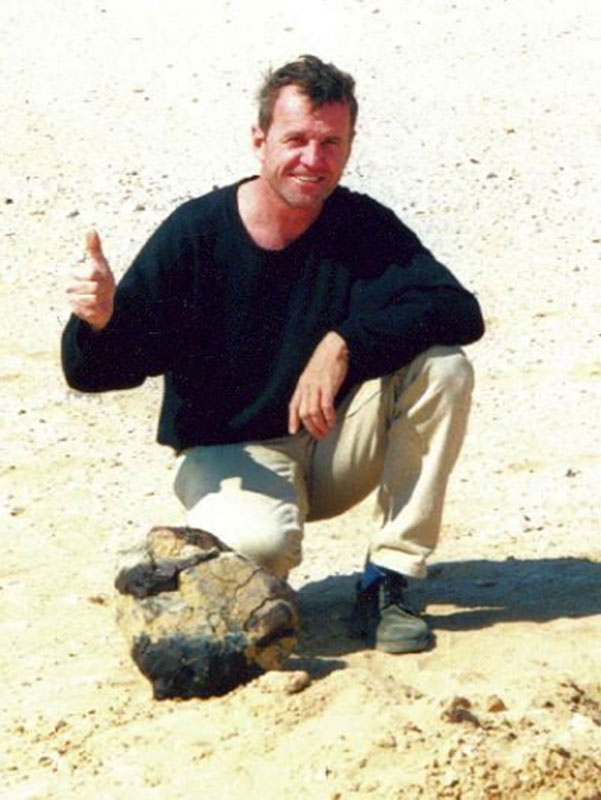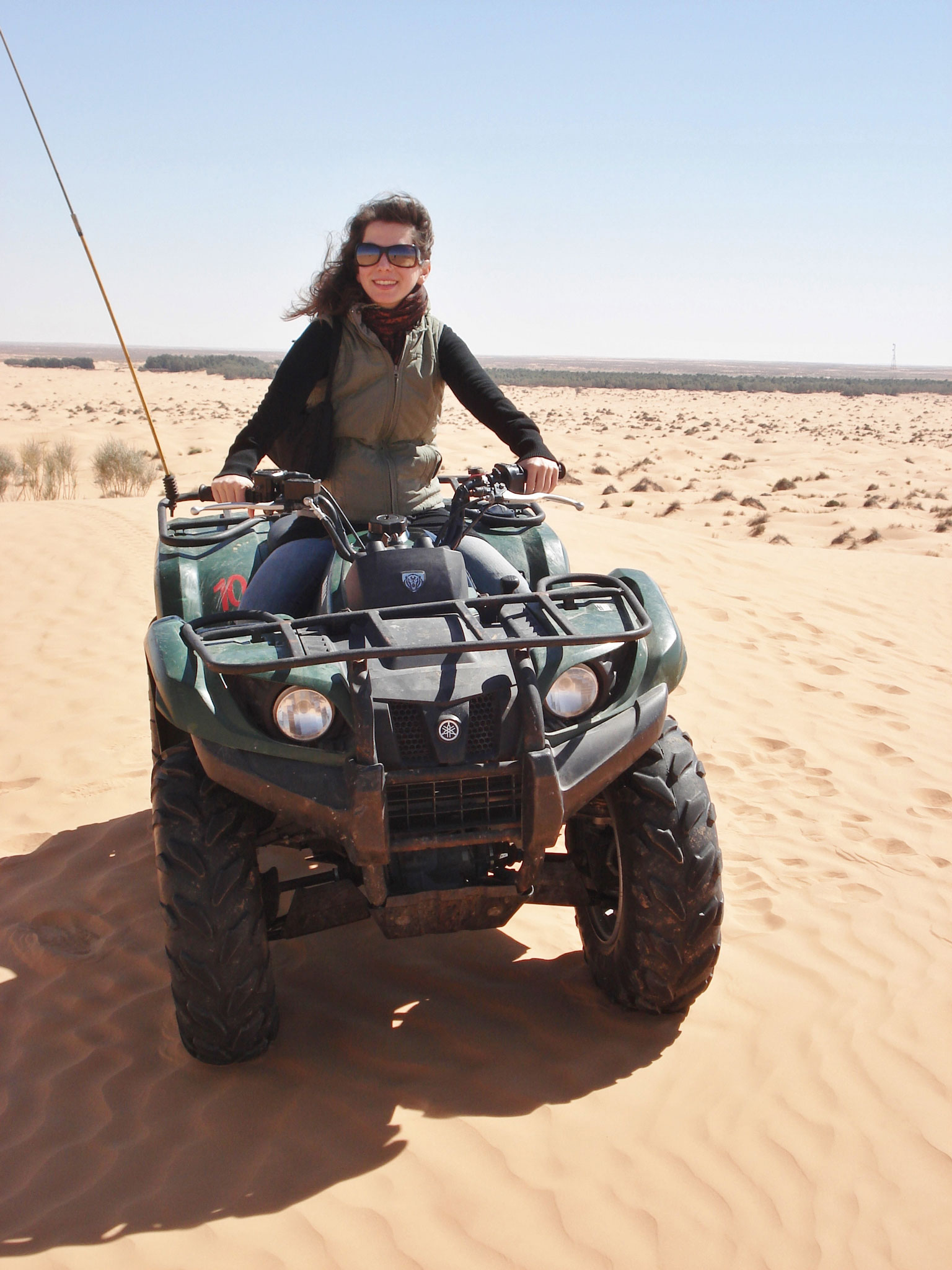Vincent Haberer

Siegfried Haberer

Siegfried Haberer was a natural and intuitive researcher and explorer. Already during his years as an architecture student, he devoted his free time to the Messel quarry in the proximity of Darmstadt, in order to trace rare fossils from the Middle Eocene period.
His tremendous enthusiasm was rewarded by yielding fossil remains of snakes, tortoises, crocodiles, mammals, and indeed two proto-horses. Many of these excavations may still be admired, particularly in the Brussels National Museum.
Even after the completion of his studies, the enthusiasm for the fossil messengers from ancient times remained constant. There followed expeditions in Europe and South Africa, where he successfully excavated the remains of saurians.
Yet his interests were not just confined to the fossils and artifacts of the past: because of his attraction for the cultural exuberance of contemporary societies and foreign lands in so far as they reflected their historical antecedents. From this impulse there followed a one year tour across Asia and South America. After that came a three week sojourn in the Nepalese foothills of the Himalayas; in the company of Sherpas and yaks.
The most glorious experience, which would be one of the most decisive experiences of his life, occurred on the night that he lost his way searching for the summit path towards Kalapadar and was given nocturnal shelter in a Buddhist monastery. He declared that the translucence of the starry nights between the snow and the ice-caped heights gave him the feeling that he was simultaneously threading the clouds while also having both feet firmly planted on the earth. Equally impressive was a trip to the Andes of South America, including a visit to the Lake Titicaca and an adventurous journey down the Amazon in small boats in the company of native Indians through the apparently endless jungle towards the Atlantic estuary.
In addition to all of this inter-continental globe-trotting he also exercised his profession as an architect. He designed various houses throughout the Black Forest region and in the environs of the university town of Freiburg. His particular enthusiasm was devoted to the renovation of splendid old villas from the ‘Jugendstil’ period.
This particular professional phase of his life also exhausted itself when it came to an abrupt end. This occurred by way of a surprising ringing of his doorbell by an old friend, Thomas, from the period when he searched for fossil treasures, with the unexpected proposal: “Siggi, would you like to join me on an expedition to the Sahara in order to search for rare stones?” “What type of stones do you have in mind?” Siegfried inquired. “Meteorites”, replied Thomas, and produced two stone fragments with dull black surface, weighing several kilograms. In the moment when Siegfried took respectful notice of the long-journeying emissaries from outer space, a tremendous passion was born within him that has endured to the present day. He spontaneously agreed to travel with his friend.
Within a brief two months Siegfried had closed his architecture office and set off with Thomas with two fully-packed Jeeps on the adventurous journey towards Libya. From this moment on, his tools were no longer dividers, rulers, and sketching pencils. Instead he was embroiled in petrol smelling cans, sand plates, spare wheels, tool boxes, magnets, maps, and various other utensils which are indispensible in search of meteorites. Lifting his first cosmic stone, as the first human being to hold it in his hands, was for Siegfried an overwhelming experience.
The first expedition was accomplished with their own Jeeps. They had crossed the Mediterranean to Libya, and then travelled with the Jeeps towards the centre of the Sahara and through Tunisia and Morocco. After two violent attacks in Libya, from which Siegfried was lucky to survive, he decided for the more civilized Oman.
Siegfried was always concerned that his commitment for the rare stones from the universe should be made available for mankind in general. He fulfilled this commitment by appearing on various television and radio shows, and together with Karin Schneider published various articles in renowned scientific periodicals and newspaper.
On the 7th of October, an event occurred which galvanized Siegfried’s attention: in Sudan, for the first time, an asteroid which already been observed in the universe, collided with the earth, a collision with earth which had been correctly scientifically predicted. The prior observations had been made by Richard A. Kowalski. On the 6th of October the amateur astronomer discovered the asteroid, which was later titled 2008 TC3.
He immediately publically distributed this information, which led to a global focus of multiple telescopes on the asteroid. Nineteen hours later the 83 ton celestial emissary exploded above the Nubian Desert in North Sudan, as predicted. It exploded in a multitude of fragments, close to the desert train station ‘Almahata Sitta’, meaning station number six, which later became the name of the meteorite.
Siegfried was so fascinated by this phenomenal event that he employed every conceivable strategy in order to obtain a fragment from this sensational meteorite. He was the first who offered fragments of the Almahata Sitta meteorite for sale, and provided more than a hundred scientists around the world with the precious material. The results of the scientific investigations showed very quickly that not only the circumstances of the fall of the asteroid 2008 TC3 were to be attributed with a special status. Most probably 2008 TC3 originated from a collision of several (presumably three) different asteroids. And the rock samples of the Almahata Sitta meteorites are spectacular too: scientists could provide, inter alia, the evidence for several different amino acids –
the main building stones of life itself – as well as hydrocarbon compounds.
For Siegfried it is of special interest to collaborate closely with scientist from all over the world which is why he is mentioned by name in scientific publications.
Today, in contrast to before, Siegfried carries out the search for meteorites only as a hobby, however with the same enthusiasm.
Karin Schneider

